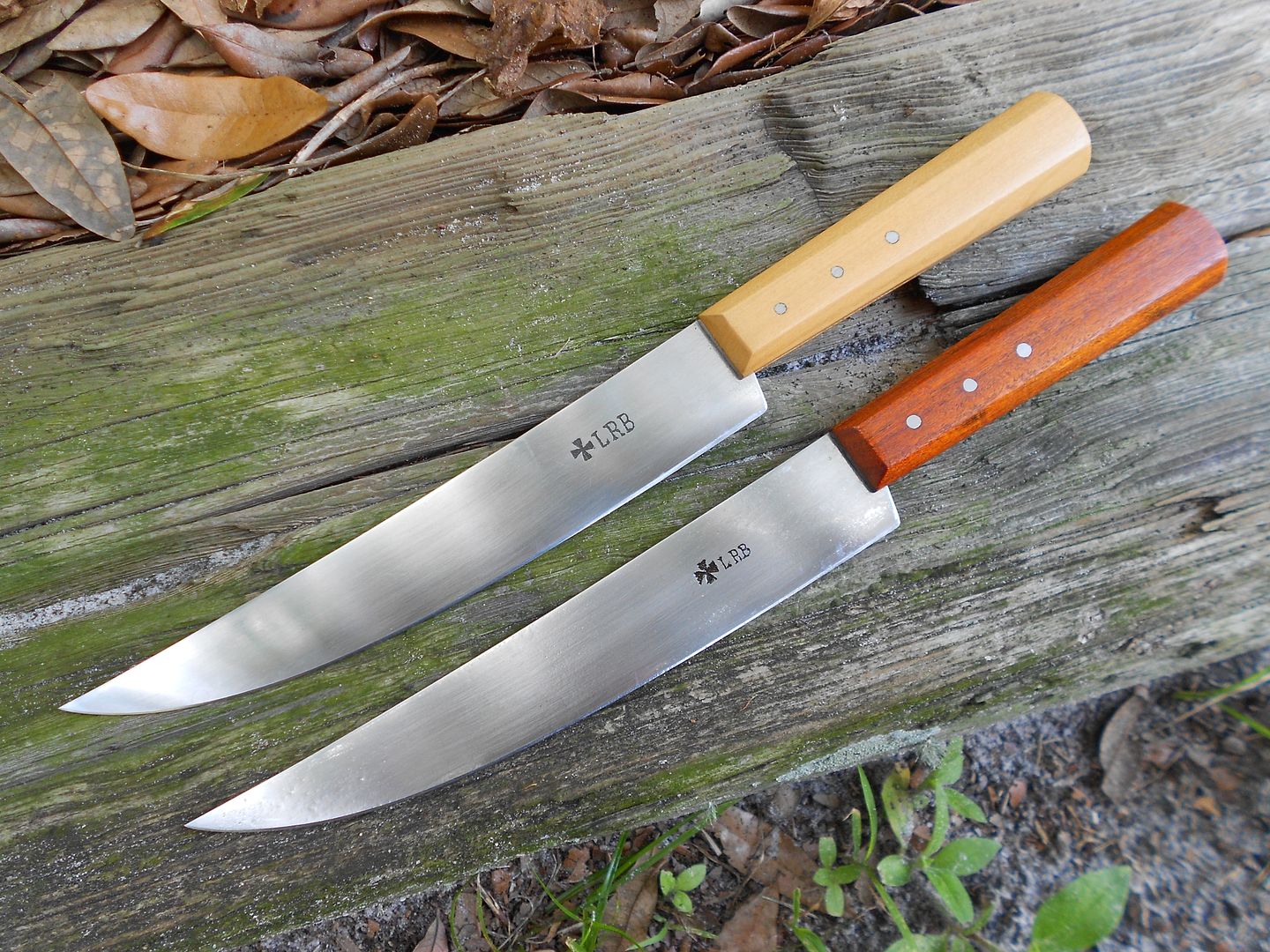WyomingWhitetail
40 Cal.
- Joined
- Oct 10, 2011
- Messages
- 208
- Reaction score
- 38
Was working on an skinner type knife that I forged out of 1084 several years ago the other day. I got the handle scales basically shaped and was almost done with the darn thing then when I tried to put the pins in I broke one scale and now have to start over.
Wondering if I could get some tips and pointers on doing peened handle pins. I'm not sure if I will glue this handle in addition to the pins but eventually I would like to get to were I can do solely pinned handles that are nice and tight and secure.
Some of the things I would like to know are the hole fit in relation to the pin size and if there is any sort of chamfer or counter bore on the scales. Also how much should the pin stick out of the scales before peening? I think most of my problem was I had the pin way to long and was trying to peen a head of sorts on the pin instead of simply expanding it in the hole. Also what size is typically best. I'm using 3 3/32 pins, which might be a little small but that's the size of welding and brazing rod I happened to have.
Wondering if I could get some tips and pointers on doing peened handle pins. I'm not sure if I will glue this handle in addition to the pins but eventually I would like to get to were I can do solely pinned handles that are nice and tight and secure.
Some of the things I would like to know are the hole fit in relation to the pin size and if there is any sort of chamfer or counter bore on the scales. Also how much should the pin stick out of the scales before peening? I think most of my problem was I had the pin way to long and was trying to peen a head of sorts on the pin instead of simply expanding it in the hole. Also what size is typically best. I'm using 3 3/32 pins, which might be a little small but that's the size of welding and brazing rod I happened to have.





